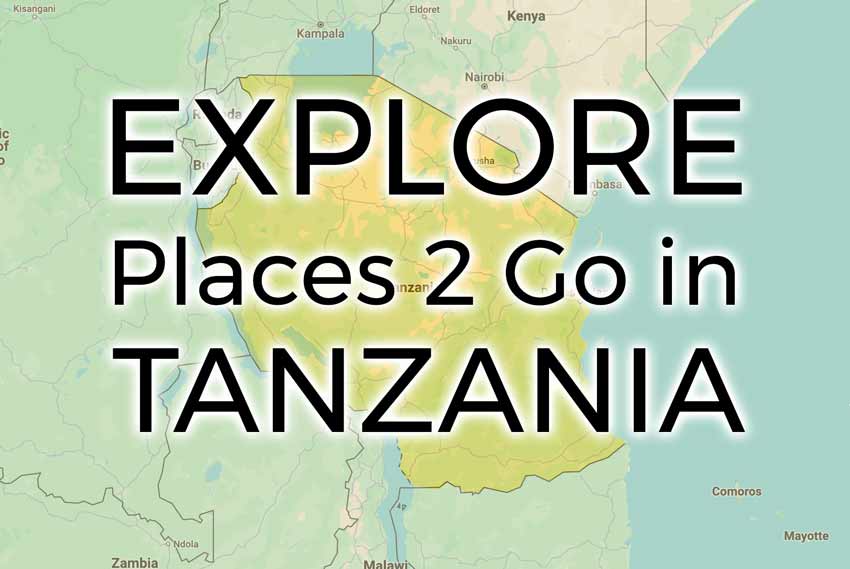Description: Ruaha National Park is the second largest National Park in Tanzania. The Great Ruaha River fascinates with its variety of mammals and birds coming to drink. This is one of Tanzania’s least accessible parks and as a result it is relatively untouched. Ruaha is known for its large elephant and buffalo herds and one of its principal attractions lies in being able to see greater and lesser kudu as well as the majestic sable and roan antelope within the same area. As well as an abundance of lion, leopard and cheetah it is also home to the increasingly rare wild dog.
Location: Southern Central Tanzania, reached by flight from Arusha or Dar es Salaam. Works nicely with a visit to Selous
Things 2 Do: Game Drives, Walking Safaris
Time: Given the distance, spend at least 3 nights. Best during the dry season.
Animals: All the usual: Elephants, Buffalo, Lion, Leopard and Cheetah. Some of the unusual: Sable and Roan Antelope and Wild Dogs.
Accommodations
$$$$
Mdonya Old River Camp
Ruaha River Lodge
$$$$$
Kwihala Camp
Jongomero
Kigelia Camp (seasonal)
Mwagusi Safari Camp
Ruaha National Park Safari – The Untouched Wilderness of Tanzania
What makes Ruaha National Park safari experiences so distinct compared to other wildlife destinations in Tanzania? The answer lies in its sheer scale, diversity, and remoteness. Situated in Southern Central Tanzania, Ruaha is the country’s second-largest national park, offering an expansive wilderness that is still largely untouched by mass tourism. The park is named after the Great Ruaha River, a lifeline for countless animals that gather along its banks, creating spectacular scenes of wildlife interaction.
Unlike the more frequently visited parks of Northern Tanzania, such as Serengeti and Ngorongoro, a Ruaha National Park Tanzania safari offers a more secluded and authentic experience. This sense of isolation, combined with the remarkable wildlife sightings, makes Ruaha one of the most rewarding destinations for safari enthusiasts seeking deeper encounters with nature.
The Appeal of a Ruaha National Park Safari
A Ruaha National Park safari immerses travelers in a landscape that feels wild and untamed. With an area covering more than 20,000 square kilometers, the park hosts an astonishing variety of ecosystems. Expansive savannahs stretch into woodlands and riverine areas, providing habitats for an extraordinary range of wildlife. The park is home to large elephant herds, sometimes numbering in the hundreds, and impressive buffalo groups moving across the plains.
Predator sightings are equally remarkable. Lion prides are abundant here, with some of the largest populations in East Africa. Leopards can often be spotted resting in the shade, while cheetahs and the increasingly rare wild dogs add further excitement to game drives. But Ruaha is also renowned for unique antelope species: both the greater and lesser kudu, alongside the striking sable and roan antelopes, can all be found here; an unusual combination not commonly seen in other Tanzanian parks.
The Experience of a Ruaha National Park Walking Safari
One of the most thrilling ways to explore this vast wilderness is through a Ruaha National Park walking safari. Unlike traditional game drives, walking safaris provide an intimate perspective of the environment. Guided by expert rangers and trackers, visitors walk through the bush, experiencing the sights, sounds, and scents of the wild up close.
These walks reveal details often overlooked from a vehicle: the tracks of predators, the delicate patterns of bird nests, or the subtle alarm calls of smaller animals warning of danger nearby. On foot, every rustle in the bushes or cry from the treetops carries meaning. A walking safari in Ruaha is not only about encountering wildlife but also about understanding the interconnectedness of the ecosystem.
For many travelers, this kind of safari is transformative, as it allows a deeper connection with the natural world, enhancing appreciation for conservation efforts that protect these fragile habitats.
Wildlife Encounters in Ruaha
Ruaha National Park offers an extraordinary range of wildlife encounters. The abundance of elephants is a major highlight, with herds frequently seen along the Great Ruaha River. This river also attracts a diverse bird population, making the park a paradise for birdwatchers with over 570 recorded species. From fish eagles circling above the water to colorful bee-eaters perched on branches, birdlife is a constant delight.
The predator-prey dynamics are equally dramatic. Watching lions coordinate hunts across the plains or spotting wild dogs chasing their quarry showcases the raw power of nature in action. Beyond the well-known species, Ruaha also surprises visitors with rarities such as the striped hyena and bat-eared fox. Every safari drive or walk holds the potential for something unexpected, a reminder of how truly wild this park remains.
Accessibility and Location
Ruaha’s remote location contributes greatly to its charm. Positioned in Southern Central Tanzania, it is typically accessed by a short flight from Arusha or Dar es Salaam. This isolation means fewer vehicles on game drives, ensuring more private and uninterrupted experiences. The park also combines perfectly with a visit to Selous Game Reserve, allowing travelers to experience two of Southern Tanzania’s premier wildlife destinations in one journey.
Due to the distance from major cities, visitors are encouraged to spend at least three nights within the park. This provides enough time to explore its vast terrain and enjoy both game drives and walking safaris at a relaxed pace.
Best Time to Visit Ruaha National Park Tanzania Safari
The ideal time for a Ruaha National Park Tanzania safari is during the dry season, typically from June to October. During this period, vegetation thins out, and wildlife congregates around the Great Ruaha River and other water sources, making sightings easier and more dramatic.
While the wet season between November and April brings lush green scenery and an influx of migratory birds, it also makes some areas more challenging to reach. For those seeking the most rewarding wildlife viewing, the dry months are highly recommended.
Activities to Enjoy During a Ruaha Safari
A Ruaha National Park safari is defined by variety. Game drives offer sweeping views of the plains and woodlands, with opportunities to witness predator hunts and large elephant gatherings. Night drives, available in certain camps, reveal nocturnal creatures such as civets, genets, and hyenas.
In addition, the Ruaha National Park walking safari option provides the chance to step out of the vehicle and experience the wilderness from a ground-level perspective. Birdwatching is another popular activity, with colorful flocks offering constant excitement for enthusiasts. Each day in Ruaha brings fresh opportunities for exploration and connection with the wild.
Accommodation Options in Ruaha National Park
The park offers a range of accommodation, blending comfort with immersion in nature. Choices vary from more rustic options to luxury safari camps, each providing unique perspectives of the wilderness.
Mid-range Options:
- Mdonya Old River Camp
- Ruaha River Lodge
Luxury Options:
- Kwihala Camp
- Jongomero
- Kigelia Camp (seasonal)
- Mwagusi Safari Camp
These lodges and camps are designed to harmonize with the environment, offering open views of the park, attentive service, and easy access to safari activities. Whether seeking tented comfort or more refined lodges, guests enjoy the perfect base for exploring Ruaha’s wonders.
Frequently Asked Questions About Ruaha National Park Safari
Q1: What makes a Ruaha National Park safari unique compared to other Tanzanian parks?
Ruaha is less visited, which ensures a quieter, more exclusive experience. It is also the only park where you can see greater and lesser kudu, sable, and roan antelopes alongside large elephant herds and diverse predators.
Q2: When is the best time to go on a Ruaha National Park Tanzania safari?
The dry season from June to October is best for wildlife viewing, as animals congregate around rivers and waterholes. The wet season is great for birdwatching, but access can be more difficult.
Q3: What animals can be seen during a Ruaha National Park walking safari?
Walking safaris reveal elephants, giraffes, antelopes, and smaller wildlife. You may also encounter birdlife and predator tracks. The focus is not just sightings but learning about the environment on foot with skilled guides.
Q4: How do I get to Ruaha National Park?
Most visitors fly into the park from Dar es Salaam or Arusha. There are small airstrips near the lodges. Driving is possible but time-consuming due to the park’s remote location.
Q5: How many days should I spend on a Ruaha safari?
A minimum of three nights is recommended, given the park’s vastness. This allows time for multiple game drives and the chance to enjoy a Ruaha National Park walking safari as well.
Q6: Can Ruaha be combined with other Tanzania safari destinations?
Absolutely. Many travelers pair Ruaha with Selous Game Reserve for a Southern Tanzania circuit or add it to a longer itinerary including Serengeti or Ngorongoro for varied safari experiences.
“A professional well run company with a background of helping regular Tanzanians.”


